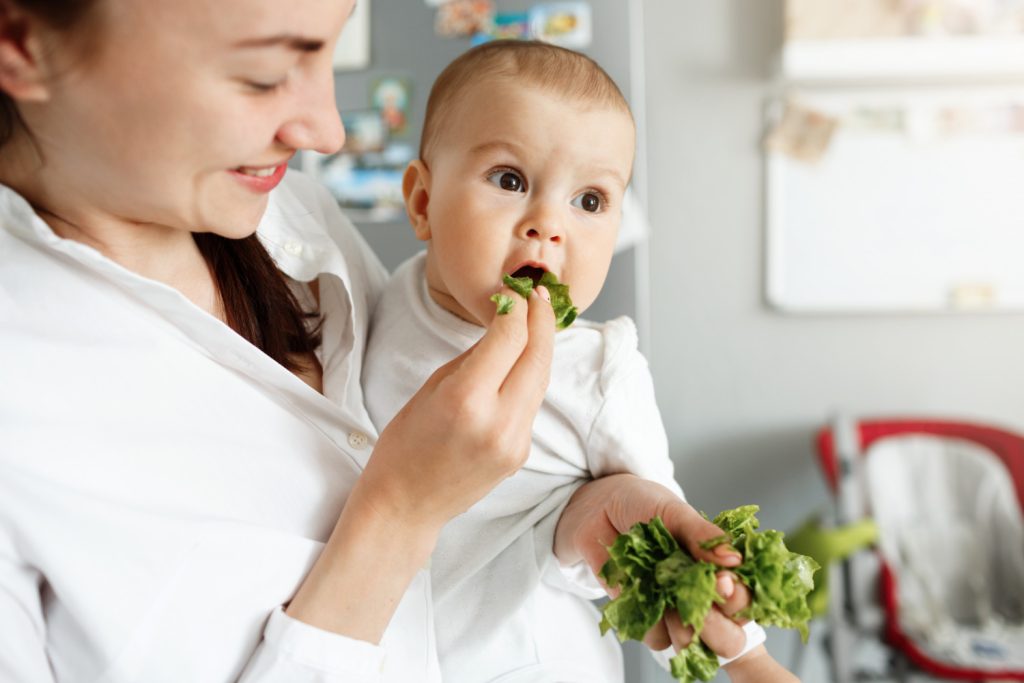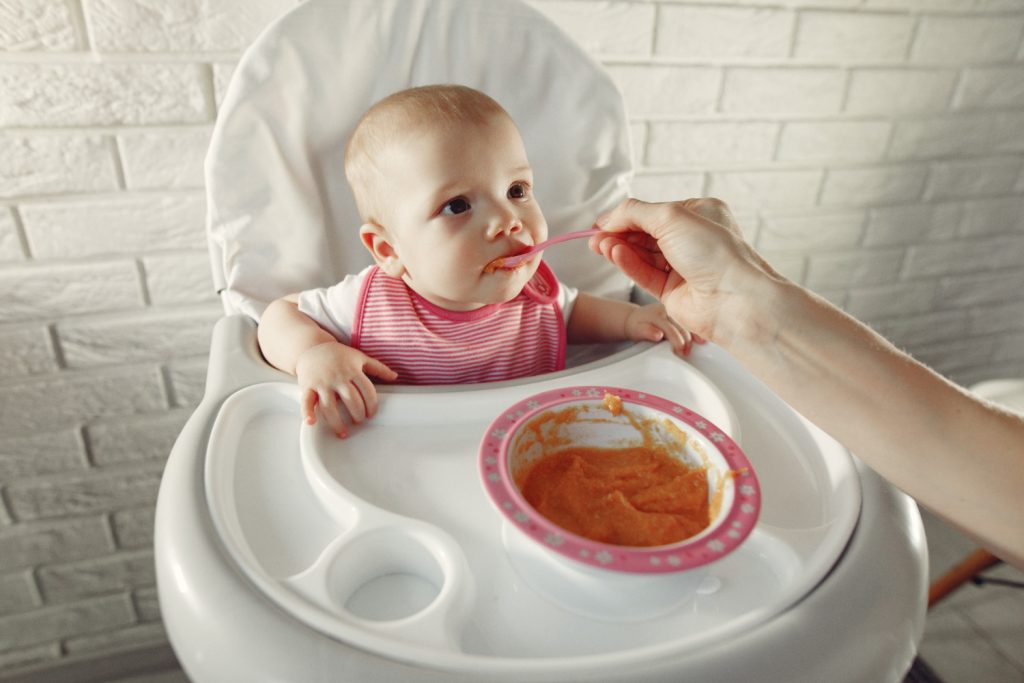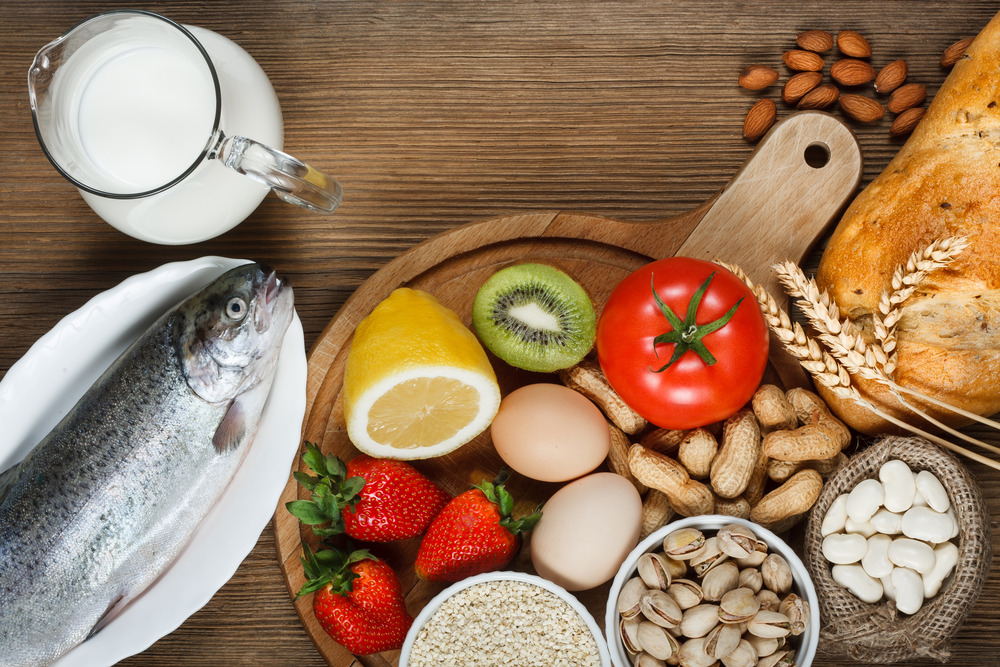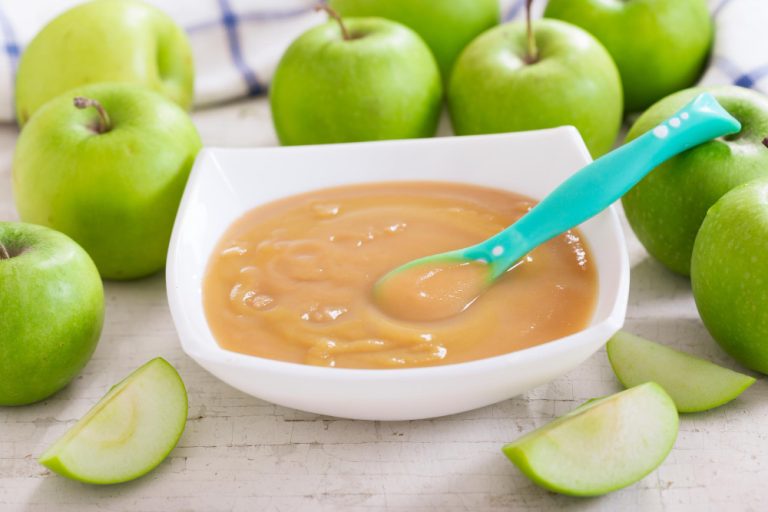When Can Babies Eat Solid Food: Introducing Solids To Babies
Are you at a crossroads, pondering when it’s the right time to step into the exciting world of solid foods with your little one? When can babies eat solid food is a common question for many parents, and it’s essential to recognize the signs that indicate your baby is ready for this exciting new stage.
Navigating this milestone can be both thrilling and daunting for parents, but fear not! Understanding the signs and best practices for introducing solids to your baby can set you on the path to a smooth and successful transition. Here’s what you can expect from our comprehensive guide on introducing solids to babies:
- Recognizing the signs of your baby’s readiness for solid foods.
- Tips on safely introducing a variety of nutritious solid foods to your baby.
- Best practices to ensure a healthy and enjoyable feeding experience for your little one.
Undertake this journey with confidence as we delve into when can babies eat solid food guidelines, tips, and expert advice to make your baby’s first encounters with solids a delightful and nourishing experience.
Get ready to witness your baby’s taste buds awaken to new flavors and textures, setting the stage for a lifetime of healthy eating habits.
Introducing Solid Food TO Babies

Introducing solid food to babies is a significant milestone that brings about exciting changes in their growth and development. As infants grow, their nutritional needs expand beyond breast milk or formula, and introducing them to a variety of solid foods becomes essential.
This stage enables them to explore new flavors, textures, and essential nutrients that support their overall health.
The introduction of solid food offers several benefits for babies. First and foremost, it provides them with a broader range of nutrients necessary for their growth. These nutrients include iron, zinc, and vitamins that breast milk or formula alone may not provide in sufficient quantities.
Moreover, solid food facilitates the development of oral motor skills, helping them practice chewing and swallowing, which are crucial for their speech and language development.
Another advantage of introducing solid food is the gradual transition it offers from a liquid diet to a more varied and regular eating pattern. It teaches babies to adapt to different tastes and textures, laying the foundation for a diverse and healthy dietary pattern later in life.
While the transition to introducing solids can be an exciting time, it’s important to remember that every baby is unique and may have their own readiness cues. Prioritizing the signs of readiness and taking a gradual approach can ensure a smooth and enjoyable experience for both the baby and the parents.
In the next section, we will explore the key indicators that show when can babies eat solid food.
Signs of Readiness for Solid Food

When it comes to introducing solid food to your baby, it’s important to wait until they show certain signs of readiness. These indicators help ensure that their digestive system is ready for new foods and that they can safely consume them.
Here are some key signs that your baby may be ready to start solid food:
1. Sitting with support
- One of the first signs of readiness is when your baby can sit upright with minimal support.
- This indicates that their neck and core muscles are strong enough to handle eating.
2. Loss of tongue thrust reflex
- The tongue thrust reflex is a natural reflex that helps protect babies from choking by pushing foreign objects out of their mouths.
- If your baby has started to lose this reflex, it may be a good time to introduce solid food.
3. Showing interest in food
- When your baby starts showing curiosity and reaching for food, it’s a clear sign that they are interested in exploring new tastes and textures.
- This can be demonstrated by them watching you eat or trying to grab food from your plate.
4. Increased appetite
- If your baby seems more hungry than usual, even after a full feeding of breast milk or formula, it could be a sign that they are ready for the added sustenance of solid food.
5. Ability to move food to the back of the mouth
- Another sign of readiness is when your baby can move food from the front of their mouth to the back, indicating their ability to swallow solid foods.
It’s important to remember that every baby is different and may show these signs at slightly different times. So, it’s crucial to observe your baby’s cues and consult with your pediatrician or a healthcare provider before introducing solid foods. This will ensure that you’re making the right decision based on your baby’s individual development.
Remember, introducing solid food is an exciting milestone, but it’s crucial to introduce it at the right time and when your baby is developmentally ready. By recognizing these signs of readiness, you can provide your baby with a positive and safe introduction to solid foods.
When Can Babies Eat Solid Food

Introducing solid food to your baby at the right time is essential for their development and overall health. The ideal age range for introducing different textures of solid food varies, and it is crucial to follow your baby’s developmental cues to determine when they are ready.
Around six months of age, most babies are ready to start eating solid foods. At this stage, their digestive system has matured enough to handle more than just breast milk or formula. However, every baby is different, and readiness for solids can vary.
Look for the following signs to determine if your baby is ready:
1. Sitting with support
- Your baby should be able to sit upright with minimal assistance.
- This indicates that they have developed the necessary neck and head control for safe and effective eating.
2. Loss of tongue thrust reflex
- If your baby no longer pushes food out of their mouth with their tongue, it’s a positive sign that they are ready for solids.
- This reflex typically diminishes around six months.
3. Showing interest in food
- Pay attention to your baby’s curiosity and eagerness when they see you eating.
- If they are reaching for your food or opening their mouth when food is nearby, it suggests they are ready to join in.
When introducing solids, start with smooth purees and gradually progress to slightly thicker textures and small pieces of well-cooked vegetables and soft fruits. Always monitor your baby closely during feeding to ensure their safety and comfort.
Remember, every baby is unique, so trust your instincts and consult with your pediatrician for personalized guidance on when can babies eat solid food.
Types of Solid Foods to Start With

When it comes to introducing solid foods to your baby, it’s important to start with appropriate options that are easy to digest and gentle on their developing digestive system.
Here are some recommended first foods for babies:
1. Single-Grain Cereals
- Single-grain cereals such as rice or oatmeal are often a popular choice for introducing solids.
- They are typically fortified with iron, which is important for your baby’s growth and development.
- Start with a thin, smooth texture and gradually thicken it as your baby gets used to swallowing.
2. Mashed Fruits and Vegetables
- Mashed fruits and vegetables are another great option to introduce to your little one.
- Choose soft fruits like bananas, avocados, or ripe pears, and cook vegetables until they are tender and easy to mash.
- Remember to avoid added sugars or salt when preparing these foods for your baby.
3. Pureed Meats or Legumes
- As your baby grows, you can gradually introduce pureed meats or legumes to provide essential nutrients like protein and iron.
- Cook meats thoroughly and blend them into a smooth puree for easier consumption.
- Cooked and mashed legumes such as lentils or chickpeas are also excellent protein sources.
4. Introduce Variety
- It’s important to provide a variety of flavors and textures to help your baby develop a well-rounded palate.
- Consider introducing a new food every few days and monitor for any signs of food allergies or sensitivities.
- This will also help them become familiar with different tastes and develop their preferences.
Remember, every baby is unique, so pay attention to their cues and preferences. Start with one food at a time and give your little one time to adjust to each new taste and texture. Gradually increase the variety and complexity of foods as they grow and develop. Always consult with your pediatrician or healthcare provider for specific guidance on introducing solid foods to your baby.
By offering a diverse range of nutritious and age-appropriate foods, you can help your baby develop healthy eating habits and establish a solid foundation for their long-term health.
Introducing Allergenic Foods

When it comes to introducing allergenic foods to your infant, such as peanuts, eggs, or shellfish, it’s crucial to follow current recommendations and seek guidance from a healthcare provider. Introducing potential allergens to your baby’s diet can help reduce their risk of developing allergies later in life.
Here are some key points to consider:
1. Consult with a healthcare provider
- Before introducing allergenic foods, consult with your pediatrician or allergist.
- They can assess your baby’s individual risk factors and provide personalized guidance.
2. Early introduction
- Based on recent studies, early introduction of allergenic foods may actually reduce the risk of developing allergies.
- It is generally advised to introduce allergens as early as 4 to 6 months of age, alongside breastfeeding or formula feeding.
3. Start with small amounts
- Begin by offering small amounts of the allergenic food to observe any adverse reactions.
- Start with a tiny portion and gradually increase the quantity over time.
4. One food at a time
- Introduce one allergenic food at a time, waiting a few days before introducing another.
- This approach helps identify any specific food allergies or intolerances.
5. Monitor for allergies
- Watch for any signs of an allergic reaction, such as rash, hives, vomiting, or difficulty breathing.
- If you notice any concerning symptoms, seek immediate medical attention.
6. Potential allergenic foods
- Common allergenic foods include peanuts, tree nuts, eggs, shellfish, fish, wheat, soy, and cow’s milk.
- Remember to introduce these foods in an appropriate form for your baby’s age and development, such as finely pureed or mashed.
7. Gradual introduction
- Slowly increase the variety and texture of allergenic foods once your baby tolerates them well.
- This helps broaden their diet and prepare them for a variety of foods in the future.
Remember, every baby is unique, and individual circumstances may vary. Following the guidance of a healthcare provider is crucial for safely introducing allergenic foods and ensuring your baby’s well-being.
Proper Feeding Techniques and Portions

Feeding a baby solid food is an exciting milestone, but it can also be a bit challenging for parents. To ensure a positive and enjoyable feeding experience, here are some practical tips on how to feed your baby solid food:
1. Use soft-tipped spoons
- When introducing solid food to your baby, opt for soft-tipped spoons specifically designed for infants.
- These spoons are gentle on their delicate gums and provide a safe and comfortable feeding experience.
- Avoid using metal or hard plastic spoons, as they may harm the baby’s sensitive mouth.
2. Start with small portions
- Begin by offering your baby small portions of solid food.
- This allows them to adjust to the new textures and flavors gradually.
- Initially, a few spoonfuls will suffice, as their primary source of nutrition will still be breast milk or formula.
- As your baby shows readiness and acceptance, you can slowly increase the portion size.
3. Follow your baby’s cues
- Observe your baby’s appetite cues during feeding.
- They will indicate when they are full, such as turning their head away or closing their mouth.
- Do not force them to eat if they are not interested.
- Respect their signals and allow them to determine their own hunger and fullness.
4. Gradually increase the amount
- As your baby becomes more comfortable with solid food, you can gradually increase the amount offered.
- Start with one meal per day and gradually progress to two or three meals, depending on your pediatrician’s recommendations.
- Remember, solid food is meant to complement breast milk or formula, not replace it entirely.
5. Encourage self-feeding
- As your baby grows older and develops their motor skills, encourage self-feeding.
- Offer age-appropriate finger foods that are soft and easy to chew, such as small pieces of well-cooked vegetables or soft fruit slices.
- This promotes independent eating and enhances their fine motor skills.
6. Create a positive mealtime environment
- Make mealtime a positive and enjoyable experience for your baby.
- Sit together at the table, engage in conversation, and maintain a calm and relaxed atmosphere.
- This helps create a healthy and positive association with food.
Remember, every baby is unique, and their eating patterns may vary. Trust your instincts as a parent and seek guidance from your healthcare provider for any specific concerns or questions regarding your baby’s feeding journey.
By following these proper feeding techniques and portions, you can set a solid foundation for your baby’s lifelong healthy eating habits.
Food Safety Considerations

Ensuring the safety of the food you introduce to your baby is crucial for their health and well-being. By following proper food handling practices, you can minimize the risk of foodborne illnesses and allergies.
Here are some important considerations to keep in mind:
1. Properly storing baby food
- Store homemade baby food in airtight containers or ice cube trays in the freezer.
- Label and date the containers to ensure freshness and avoid confusion.
- Discard any leftovers that have been sitting at room temperature for more than two hours.
2. Preparing baby food safely
- Wash your hands thoroughly before handling food, and use clean utensils and equipment.
- Cook foods to the appropriate temperature to ensure they are safe for your baby to consume.
- Avoid using honey or corn syrup in baby food as they can pose a risk of botulism.
3. Introduce foods gradually
- Start with single-ingredient foods and introduce new foods one at a time.
- Watch for any signs of allergies or adverse reactions, such as rashes, vomiting, or difficulty breathing.
- Consult with a healthcare provider if you suspect your baby has a food allergy.
4. Avoid certain foods early on
- Avoid introducing highly allergenic foods, such as peanuts and shellfish, before consulting with a healthcare provider.
- Stay cautious of choking hazards, such as whole nuts, large chunks of food, or hard and round objects.
Remember that each baby is unique, and it’s essential to pay attention to their individual needs and responses when it comes to introducing new foods. By prioritizing food safety, you can help ensure a positive and healthy transition to solid foods.
Common Challenges and Solutions

Introducing solid food to babies can come with its fair share of challenges. Some babies may refuse to eat, while others may gag or struggle with new textures. As a parent, it’s important to recognize and address these challenges to ensure a positive feeding experience for your little one.
Here are some common challenges and practical solutions that can help overcome them:
1. Food Refusal
- It’s not uncommon for babies to reject certain foods, especially in the early stages of introducing solids.
- They may turn their head away, spit out the food, or simply refuse to open their mouth.
- One possible solution is to offer a variety of flavors and textures to keep mealtime interesting.
- Experiment with different foods and combinations to find what your baby enjoys.
- It’s also helpful to create a positive feeding environment by sitting together at the table and being a positive role model by eating the same foods.
2. Gagging
- Gagging is a normal reflex during the introduction of solid food, as babies learn to manage different textures and movements in their mouth.
- However, it can be concerning for parents.
- To minimize the risk of gagging, ensure that the food is appropriately mashed or pureed to a texture suitable for your baby’s age and developmental stage.
- Offer small, bite-sized pieces of soft food and encourage your baby to take small bites and chew thoroughly.
- Always supervise your baby closely during mealtime to ensure their safety.
3. Texture Aversion
- Some babies may have difficulty adjusting to new textures, particularly if they are used to the smooth consistency of breast milk or formula.
- Gradually introduce thicker textures and lumpier foods to help your baby become comfortable with different sensations in their mouth.
- You can start by mixing mashed foods with breast milk or formula to ease the transition.
- Over time, your baby will develop the oral coordination and muscle strength to handle a wider range of textures.
4. Food Allergies
- Food allergies are a concern for many parents when introducing solid foods.
- To minimize the risk, follow the guidelines provided by medical professionals and introduce potential allergenic foods one at a time.
- Start with small amounts and watch for any signs of an allergic reaction such as rash, vomiting, or difficulty breathing.
- If you suspect an allergy, consult a healthcare provider for further evaluation.
Remember, every baby is unique, and their journey with solid food may involve some trial and error. Stay patient, offer a variety of nutritious options, and always prioritize your baby’s safety and well-being. With time, persistence, and a sense of adventure, you’ll find the right solutions to overcome any challenges that arise during this exciting phase of your baby’s development.
Transitioning to Self-Feeding

Transitioning to self-feeding is an exciting milestone in a baby’s development. It marks their growing independence and ability to explore new foods on their own. Here are some tips on how to encourage and support your baby’s progression towards independent self-feeding:
Introducing Age-Appropriate Finger Foods
- Start by offering soft and bite-sized finger foods that are easy for your baby to pick up and swallow.
- Opt for age-appropriate options such as small pieces of well-cooked vegetables, soft fruits, or whole-grain cereals.
- Avoid hard or crunchy foods that may pose a choking hazard.
Transitioning to a High Chair
- As your baby becomes more proficient at self-feeding, it’s time to transition them to a high chair.
- Choose a safe and sturdy high chair with a harness to keep them secure during mealtime.
- Make sure the high chair is at an appropriate height so your baby can comfortably reach their food.
Encouraging Exploration
- Allow your baby to explore their food by touching, tasting, and manipulating it.
- This sensory experience helps them develop their motor skills and fosters a positive relationship with food.
- Be prepared for messes and use a bib or cover to protect their clothes and the surrounding area.
Gradual Progression
- Start by offering one or two finger foods at a time and gradually increase the variety and complexity of textures.
- Offer a balanced mix of different food groups to ensure your baby receives a variety of nutrients.
- Pay attention to your baby’s cues and appetite, allowing them to decide how much they want to eat.
Remember, transitioning to self-feeding takes time and patience. It’s normal for babies to take some time to develop their motor skills and coordination. Offer support, praise their efforts, and enjoy this exciting stage in your baby’s journey towards independent eating.
The Final Note: When Can Babies Eat Solid Food
To sum up, the journey of introducing solid foods to your baby is a significant milestone filled with anticipation and joy. By recognizing the signs of readiness and understanding the essential guidelines for this transition, you can ensure a positive and safe introduction to solid foods.
Knowing the answer to “When can babies eat solid food?” and being attuned to your baby’s unique developmental cues will pave the way for a smooth and enjoyable experience. As you venture on this exciting new stage with your little one, remember that every baby progresses at their own pace, and consulting with healthcare professionals can provide valuable support and guidance.
With patience, care, and an eagerness to nurture healthy eating habits, you can lay the foundation for a lifetime of nutritious and delightful mealtimes for your baby.
FAQs: When Can Babies Eat Solid Food
As parents undertake the journey of introducing solid food to their babies, it’s natural to have questions and concerns. Here are some frequently asked questions to help guide you through this exciting milestone:







